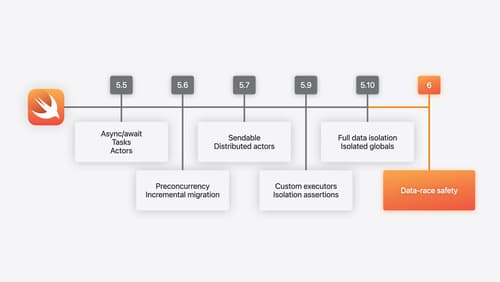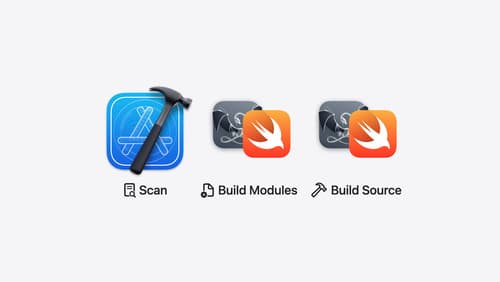what's the error: cannot link directly with 'SwiftUICore' because product being built is not an allowed client of it
Asked on 2024-07-31
1 search
The error "cannot link directly with 'SwiftUICore' because product being built is not an allowed client of it" typically occurs when there is an attempt to use a module or framework that is not intended to be directly accessed by your project. This can happen due to several reasons, such as:
-
Module Access Restrictions: The module
SwiftUICoremight be restricted to certain clients or products, and your project is not one of them. This is often controlled by the module's access control settings. -
Incorrect Module Import: You might be trying to import a module that is not meant to be imported directly. Instead, you should use a higher-level module that internally uses
SwiftUICore. -
Build Configuration Issues: There might be a misconfiguration in your build settings that is causing this issue. Ensuring that your project is correctly set up to use the necessary modules can help resolve this.
To address this error, you can try the following steps:
- Check Module Documentation: Review the documentation for
SwiftUICoreto understand its intended usage and any access restrictions. - Use the Correct Module: Ensure that you are importing the correct module that is intended for your use case.
- Review Build Settings: Verify your build settings to ensure that your project is configured correctly to use the necessary modules.
For more detailed guidance on handling module dependencies and build configurations, you might find the session Demystify explicitly built modules helpful. This session covers how modules are built and managed in Xcode, which could provide insights into resolving such issues.

What’s new in Swift
Join us for an update on Swift. We’ll briefly go through a history of Swift over the past decade, and show you how the community has grown through workgroups, expanded the package ecosystem, and increased platform support. We’ll introduce you to a new language mode that achieves data-race safety by default, and a language subset that lets you run Swift on highly constrained systems. We’ll also explore some language updates including noncopyable types, typed throws, and improved C++ interoperability.

A Swift Tour: Explore Swift’s features and design
Learn the essential features and design philosophy of the Swift programming language. We’ll explore how to model data, handle errors, use protocols, write concurrent code, and more while building up a Swift package that has a library, an HTTP server, and a command line client. Whether you’re just beginning your Swift journey or have been with us from the start, this talk will help you get the most out of the language.

Demystify explicitly built modules
Explore how builds are changing in Xcode 16 with explicitly built modules. Discover how modules are used to build your code, how explicitly built modules improve transparency in compilation tasks, and how you can optimize your build by sharing modules across targets.
